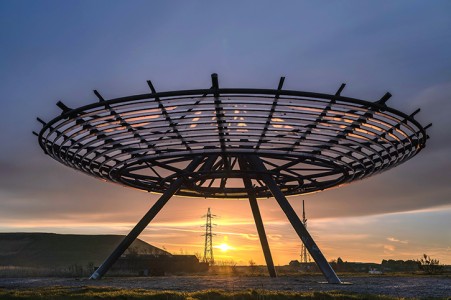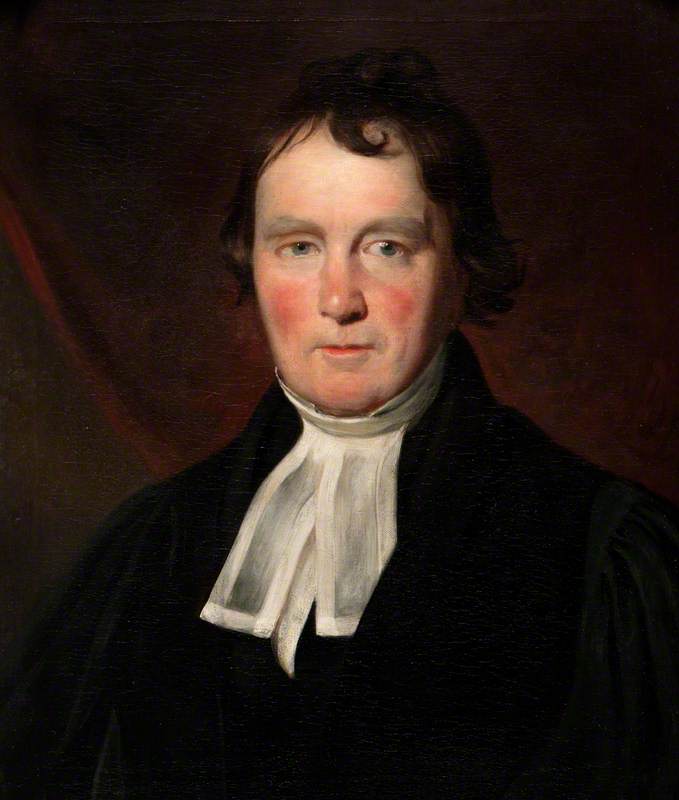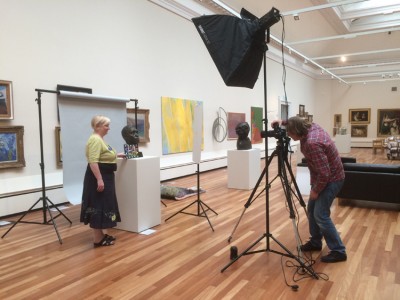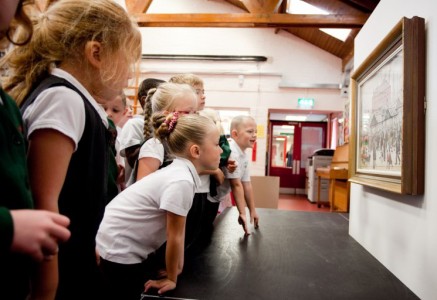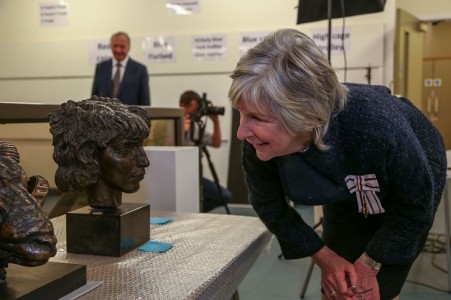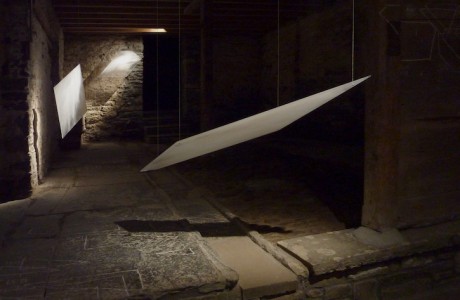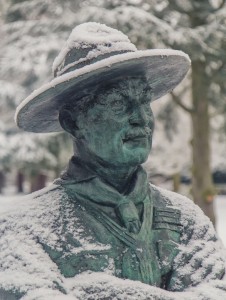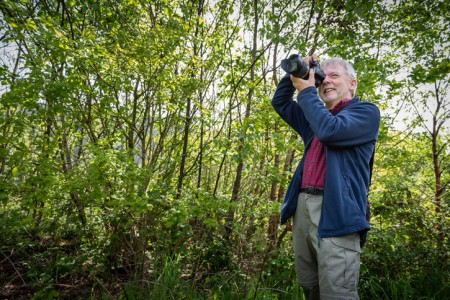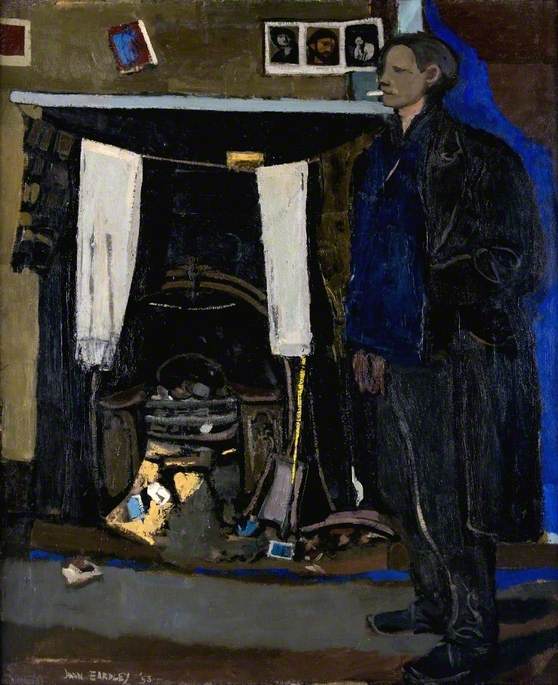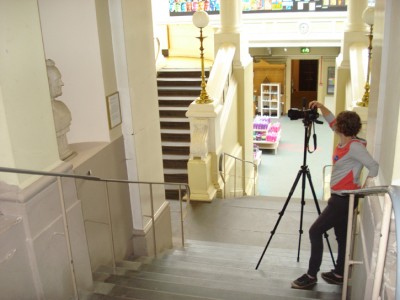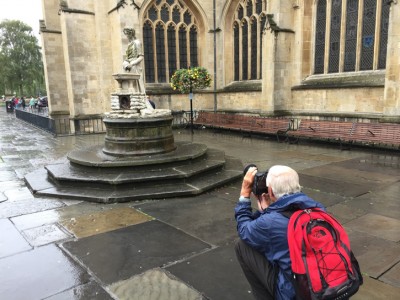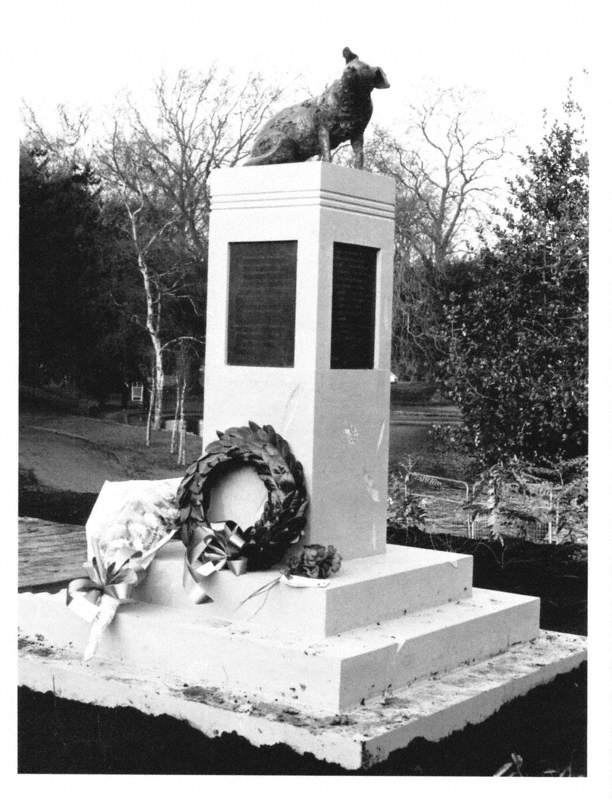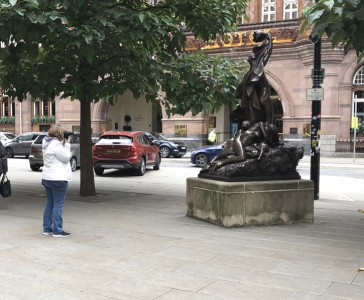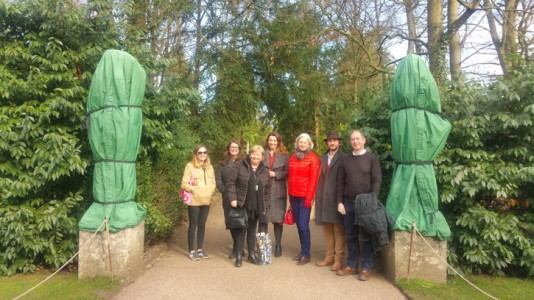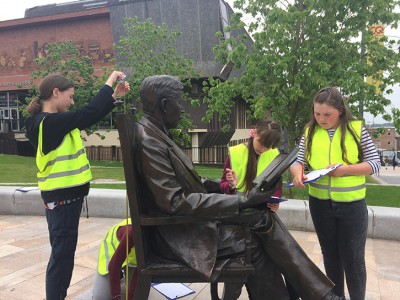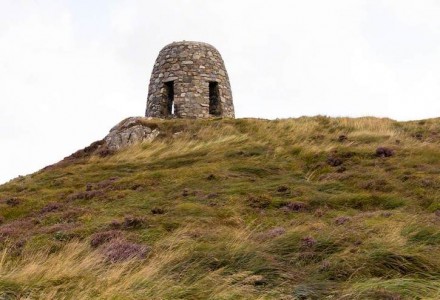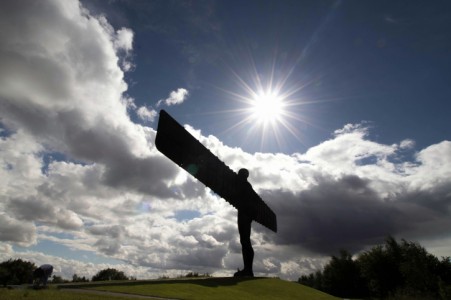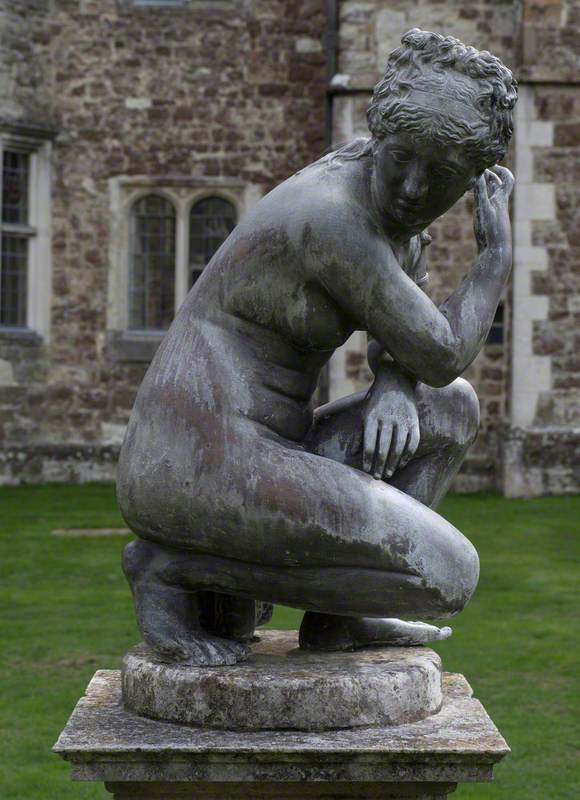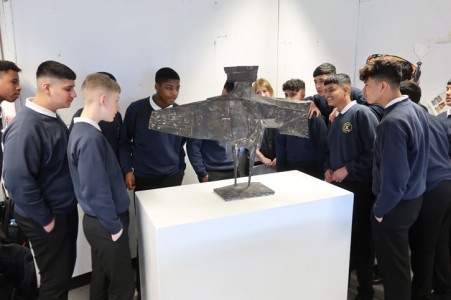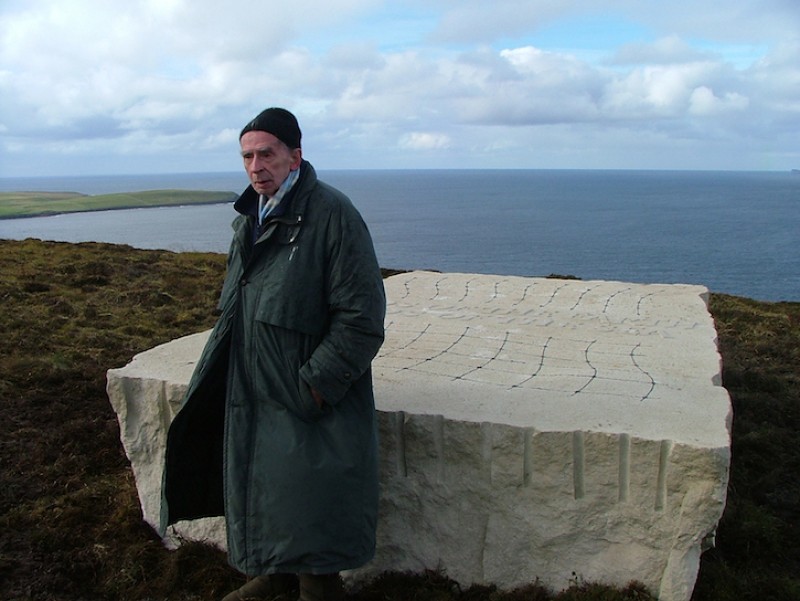Visiting collections in the farthest reaches of the Highlands and Islands of Scotland is a fascinating and, at times, challenging part of my role as coordinator for the Art UK Sculpture Project in this region.
Last month I travelled to the west coast port of Mallaig and from there to the islands of Skye and Rum to photograph sculptures in a heritage centre, two castles and a Gaelic college.
Something I was struck by on this trip was the extraordinary contrast between two of the collections I visited that could be seen to symbolise aspects of the social and political history and landscape of this part of the world. The trip caused me to reflect on how the Sculpture Project and ventures like it can have a valuable role in contextualising and sometimes reframing a place’s history through its artworks and buildings.

On the road
I set off from my home, 30 miles east of Inverness, and drove the stunning three and
In Mallaig, I joined our photographer, Carsten, and after photographing The Peat Gatherer – a cast concrete sculpture of a man bent under the weight of the basket of peat he holds on his back – that stands in Mallaig Heritage Centre, we boarded the ferry to Rum. It was a nice moment, when after meeting with the curator of the Heritage Centre, I wandered down to the fish and chip van on the pier, only to be greeted by the same man who had just been knowledgeably telling me about sculpture, now in his other role, serving cups of tea and fish suppers.

Since taking on this position with Art UK I have found myself making use of the Caledonian MacBrayne ferries more than ever before. Growing up on the east coast of Scotland, the ferries to the islands – almost exclusively off the west coast – only featured on occasional holidays. The excitement of these great colourful machines lifting up their noses to allow cars to drive inside, the smell of salty sea air and diesel fumes while standing on the deck, and the distinctive red seats shining in the sun, still hold childhood nostalgia.

Since living in Glasgow and making close friends and new family connections in the Inner and Outer Hebrides, as well as in my own work, CalMac ferry journeys have become a routine part of my year. Nevertheless, using them for the Sculpture Project has been an added bonus and over the last few months especially I have come to greatly appreciate this very particular, (mostly) reliable, still exciting mode of transport that connects many of the islands of Scotland to the mainland, even after countless crossings.

For our trip to the Isle of Rum, I had to organise a special vehicle pass to bring the car loaded with photography equipment onto the island, which does not usually allow cars. We were beckoned onto the boat by the cheery crew who expertly guided the car onto the small ferry, squeezing us in between two large work vehicles with ease.
The voyage to Rum took around two hours, passing the beautiful Isle of Eigg on our left and the great expanse of Skye to our right. Coming into the bay where the pier and ferry port is, the eye is immediately drawn to Kinloch Castle which stands out defiantly, looking back to the mainland, squat and turreted in crumbling red sandstone. This was our destination and the collection whose sculptures we had come to photograph.
Kinloch Castle is just visible at the end of the rainbow
An immoderate manor
Kinloch Castle was built in 1897 by George Bullough the ‘volatile’ son of John Bullough, a wealthy Lancashire industrialist who had bought the island some years earlier. Everything about the castle and its grounds
Even the deer, game birds and trout were imported to the island for the Bulloughs to shoot and fish during the few weeks a year that they spent there. There are endless bizarre stories surrounding this place, a display of wealth and empire – and possibly boredom – in epic proportions. The ballroom, where we set up to photograph the sculptures is a strange room with high windows, designed so that no one could see in. When parties were organised the castle was shrouded in secrecy and rumours have flourished about the sordid goings-on that took place there ever since. George Bullough, like many of the British elite at the time, had a preoccupation with killing and his mansion is full of stuffed animals, now past their best. The castle itself is at risk of dry rot creeping into the walls and has soft sandstone that has not stood up well to the Hebridean gales.

It was evident that George Bullough had a fascination with violence and particularly methods of human torture that he had witnessed and documented on his world tour in the 1890s – many of which had been introduced by the British. A photo album contains horrific images of crucifixions in Burma and some of the sculptures we photographed here reflected this brutality too, among them a pair of Japanese wrestlers, locked in combat, with disturbing expressions on their faces.

The place left me with a depressing heaviness about the past, which was not lifted by reading about Rum’s history of ownership. The island was brutally affected by the clearances that forcibly moved people off the land in Scotland in the name of progress and commerce. Only a handful of people now live on Rum permanently and the ruined houses of what was once a village, in a sheltered dell with a view over the bay and a stream chattering through, stand in contrast to Kinloch Castle – both a testament to the island’s turbulent history.

After a tiring couple of days working through the castle’s unusual collection of sculptures, we left Rum. The rain, which had been pouring down all that morning, stopped abruptly and the sea and islands dazzled brightly for our windy crossing back to Mallaig, via Muck and Canna, with the journey taking four hours this time rather than two.
Another ferry from Mallaig and on to our next destination which was the Isle of Skye and the Gaelic college, Sabhal Mòr Ostaig.

Off to school
Founded in 1973 Sabhal Mòr Ostaig stands as a beacon for the revitalisation of a language and culture that just a few generations before was near extinguished.
A seat of study for native Gaelic speakers as well as new learners, there is a sense of welcome and energy about the place. Part of the campus which was built in the late 1990s stands impressively looking out over the Sound of Sleat. Newer developments including the £8 million Fàs centre for creative and cultural industries, incorporating a television studio, offices, workshop, exhibition spaces, and childcare facilities, all point to a positive future for learning and working in the area. Sabhal Mòr Ostaig has been the recipient of EU as well as government funding and this too gives it a sense of outward-looking internationalism as well as local regeneration. Talk of a sustainable new ‘Highland village for the twenty-first century’, the first stages of which are underway just down the road, made me think again about the ruined village on Rum and those scattered across the Highlands and Islands.
The sculpture that we were photographing is situated in front of Sabhal Mòr Ostaig, looking out towards the mainland. Crannghal is a piece that was commissioned by the college and made by artists Will MacLean and Arthur Watson.
Cast in bronze, it is the half-built framework of a ‘curragh’, a small seafaring boat used by Columba and his monks when travelling from Ireland to Iona. The boat is supposed to be under construction or reconstruction and the artists also cast their tools in bronze, leaving them at the base of the piece, in what Will MacLean describes as ‘a metaphor for the ongoing work that Sabhal Mòr Ostaig is undertaking in leading the revitalisation of Gaelic language and culture.’
'Crannghal: framework of a coracle, any skeleton-like odd contrivance' (from Edward Dwelly's Scottis
Homeward
Reflecting on these few days as I stood on the deck of the ferry looking back over the Sound of Sleat, and as I got in the car in Mallaig to drive home, I thought a lot about these two places and their contrasting cultural positions. I also thought about the contrast between the sculptures we had photographed – the strange collection at Kinloch Castle that seemed to have been assembled so randomly, and the sculpture at Sabhal Mòr Ostaig, made to reflect the regeneration taking place around it.
Through the Sculpture Project, these objects would soon be presented alongside each other in a new life as part of the Art UK catalogue of artworks in Britain. With this comes the possibility that they will be seen and experienced by fresh eyes, visited and viewed again with different perspectives and understanding.

Sophia Sheppard, Art UK Coordinator
Follow Sophia’s progress with the Art UK Sculpture Project in the Highlands and Islands on Instagram @sculpturefinder
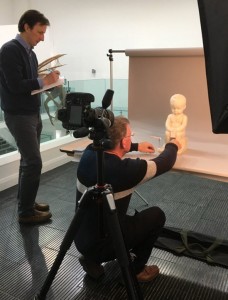
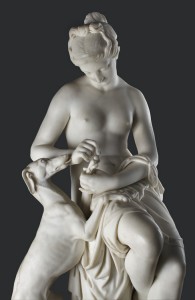
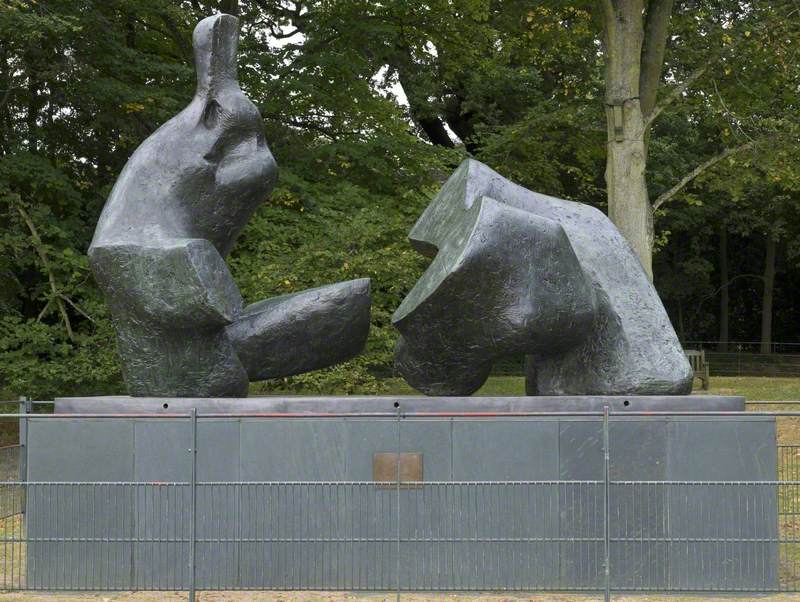
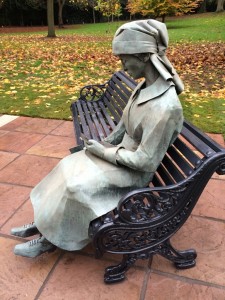
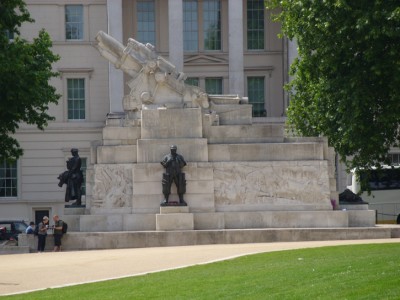
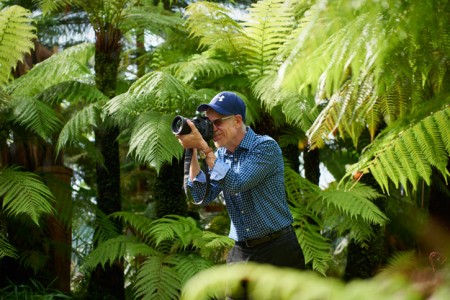
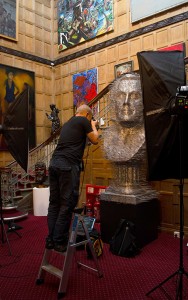

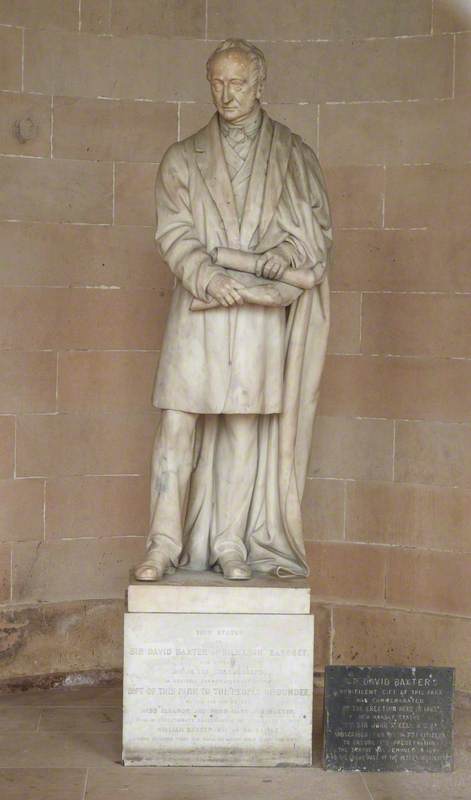


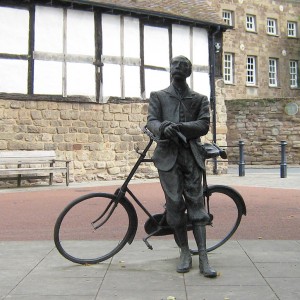

.jpg)
